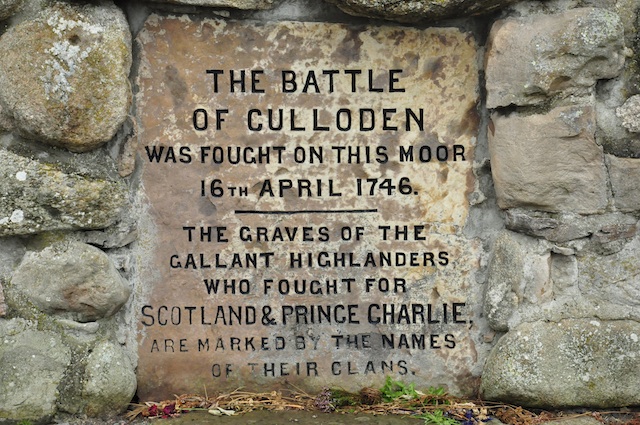The Battle of Culloden happened on April 16th, 1746, near Inverness, Scotland.
The Lead-up
The Jacobites were a group of Scottish Highlanders who wanted to restore The House of Stuart to the British throne.
The reason for this was largely due to the actions of the ruling House of Hanover, who were in the process of wiping out the traditional Scottish clan system in order to have better control of the country.
Some of the rules that were introduced by the House of Hanover were the banning of kilts and tartans, the handing over of swords to the government, and the removal of clan leaders’ powers.
The Jacobites were supported and armed by the French, who were also against the House of Hanover. ‘The Auld Alliance’ between Scotland and France had dated from at least the 13th century.
The Battle
The battle was between The Jacobites and the loyalist army of the British Government, led by the Duke of Cumberland.
The battle was quick, bloody and brutal. The British army killed between 1500 and 2000 Jacobites, and reported losing as few as 30 men.
By April 18th, the Jacobite army had disbanded, choosing to flee back into the Highlands, or abroad.
Charles Edward Stuart – head of the House of Stuart and nicknamed ‘Bonnie Prince Charlie’ – escaped to the Western Isles, then to France, and would never return to Scotland.
The Aftermath
Defeat at Culloden was devastating for Jacobean, Highland and Gaelic culture.
The Duke of Cumberland became known as ‘Butcher’ as he cracked down on Jacobite culture. Many Jacobites were executed or banished to the British overseas colonies. Clans’ land was removed from their ownership. Highland priests were forced to give oaths to the Hanovarian rulers. Gaelic language was widely discouraged.
Meanwhile victory at Culloden helped the House of Hanover bring the entire British Isles into line. The effects are still noticeable today: Scotland (even in much of the Highlands) is English speaking, has land ownership laws similar to England, and traditional Highland life is rare.




